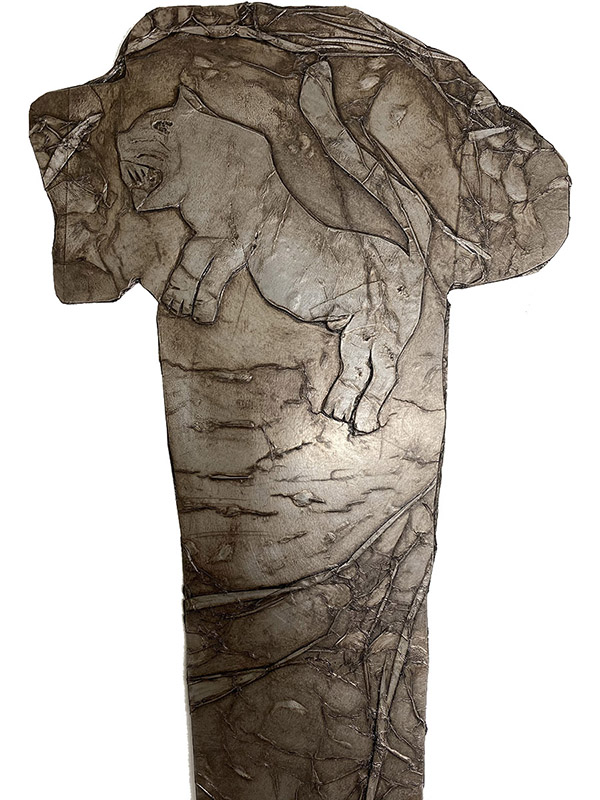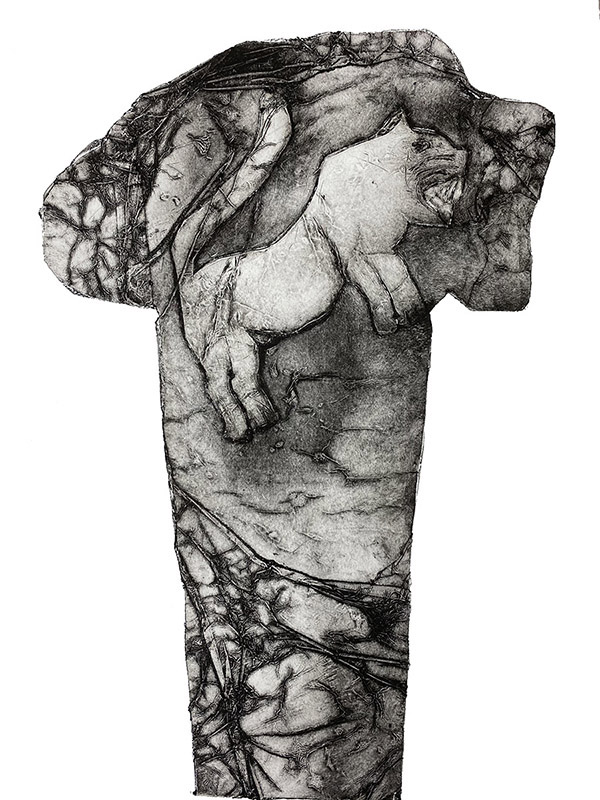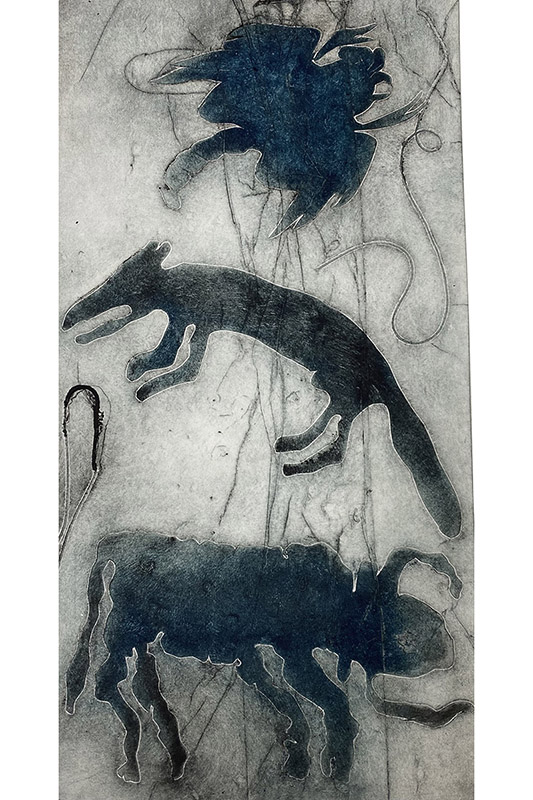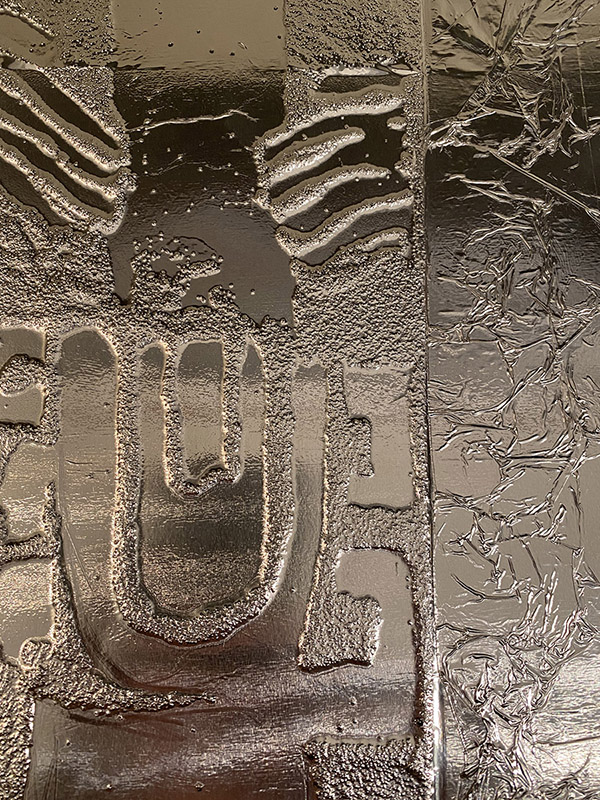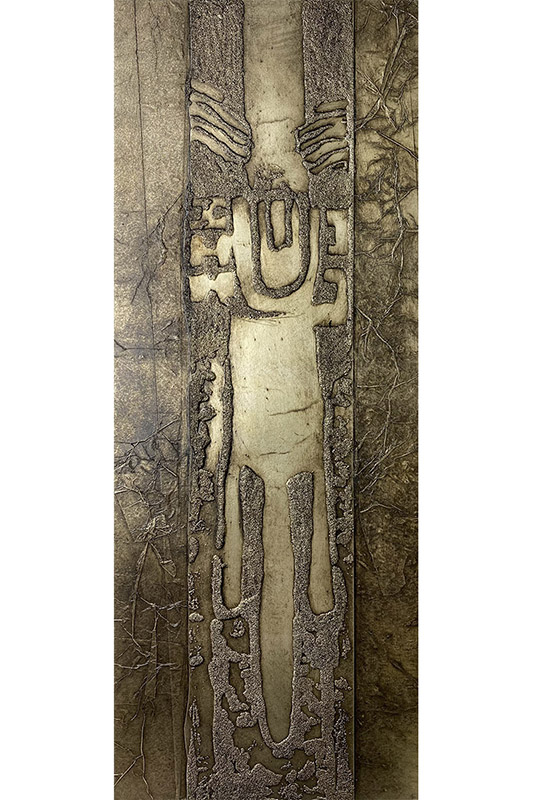I use materials in an unconventional way and on many different surfaces to create my work.
Sandra Crisp LG: “In a previous London Group exhibition at Kensington and Chelsea College Gallery you exhibited a sculptural wall piece incorporating an intriguing use of magnets to combine and fix metal elements together. You also make free-standing cylindrical sculpture installations made with rolled metal sheets and images applied to different surfaces, I would really like to learn more about these techniques.”
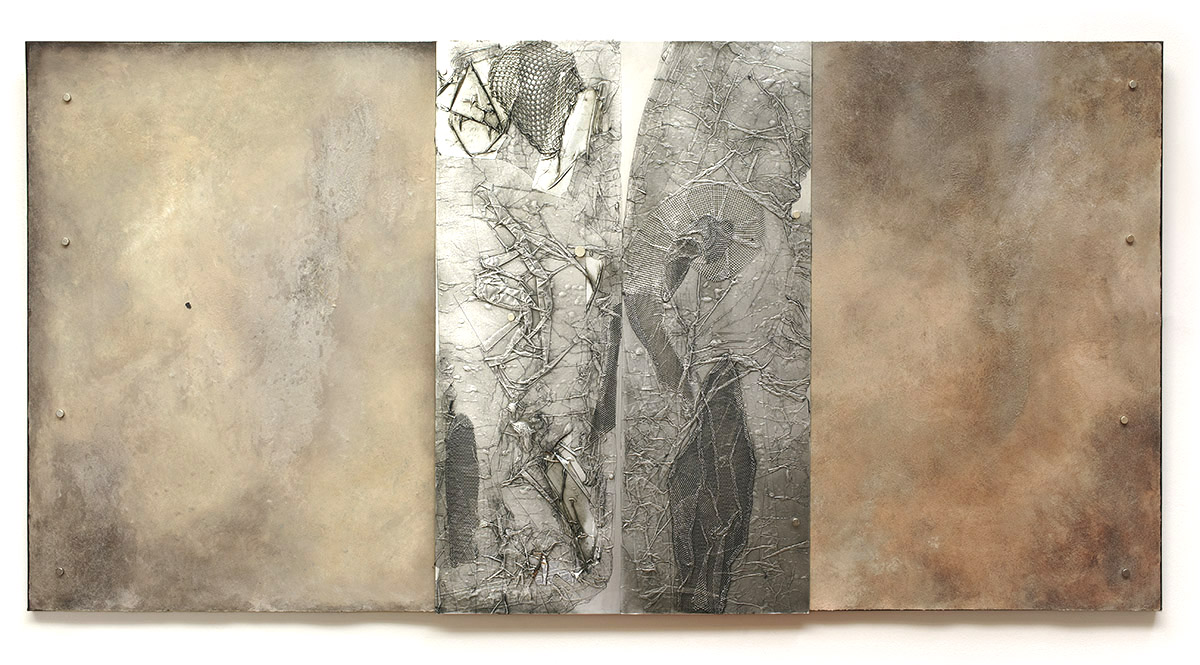
Ece Clarke: “As London Group members will have seen at prior exhibitions, or from my website, I use materials in an unconventional way and on many different surfaces to create my work. During the last 10 years much of my work has been completed in a broad range of mixed media on Somerset paper, but sometimes with layers of aluminium foil, mesh or other materials as well. This may be incorporated directly onto the paper, or indirectly through other processes such as printing, so the shapes are embossed into the paper. The starting point is always a flat surface, but the final work will have depth, texture and in some cases three-dimensional form as well.
“The materials that I use are almost unlimited. Everything I see or come across has the potential to be incorporated in some way. The potentiality of materials may also direct my work – for example, how a thin brass sheet could be manipulated may inspire specific ideas in my imagination and create a space in a piece for that brass sheet to be used. Every process I learn can be applied in some way. The only limitation is whether or not I have seen or come into contact with some potential material or process or not. The range of materials I use, a combination of pigments that may be oil or acrylic based, shellac, bitumen, varnishes, infuse the paper making it much heavier. Each one has its own unique colour and texture. Some shine, some are matt, and they combine in a fractal dance, both on and below the surface. For me they are a microcosm of nature – and their interactions and combinations as they work their way into the surface is a source of endless fascination for me. As I am applying them, and at different stages as the work develops, I rework the surface which reveals other qualities about the materials and the degree of attachment they have established to the surface. Some are light and easily worked, but others embed themselves in the surface strongly and can only be modified or partially torn or ripped from the surface with sharp equipment. The result is a distressed, heavily worked surface that has had the full three-dimensional experience.
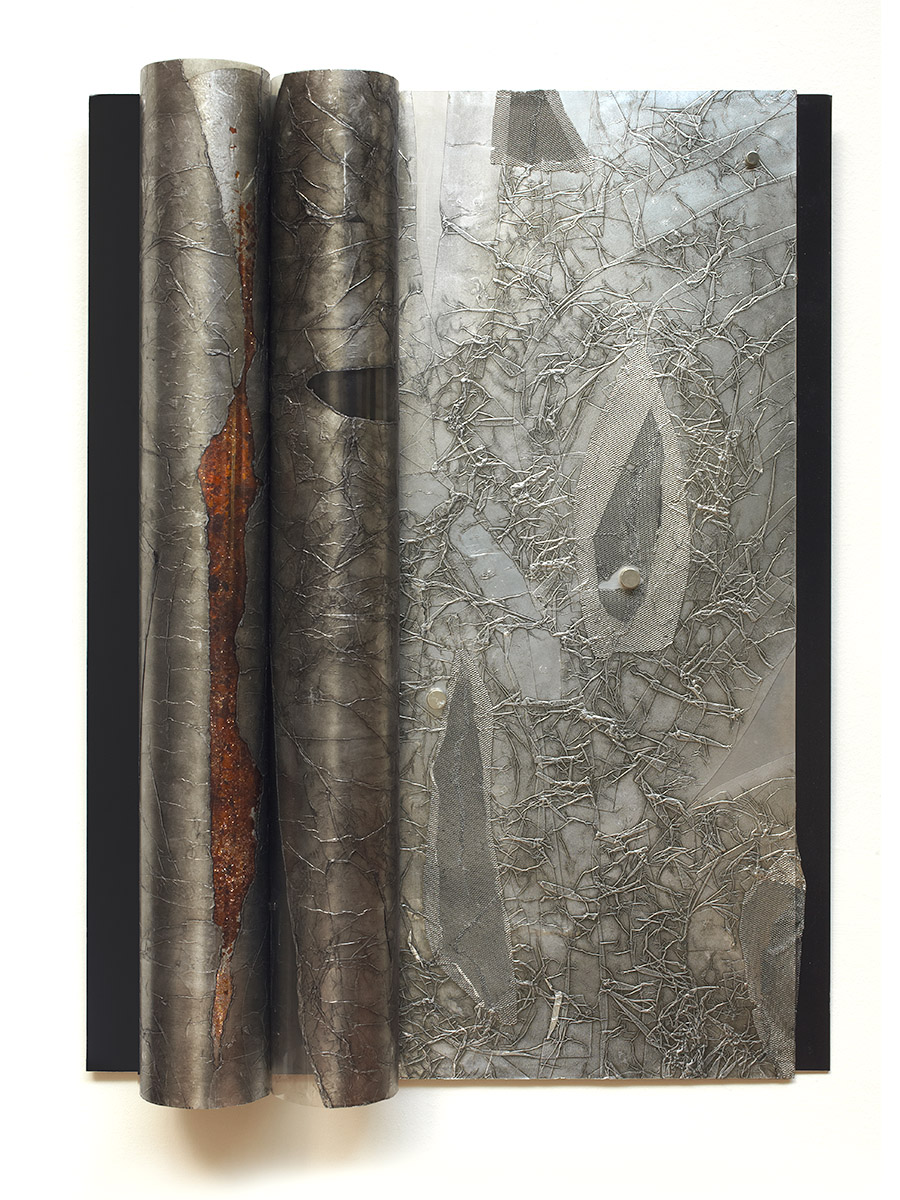
“During the last few years, I have been particularly drawn to print making as a key process in my work, and the plates created for the process have also become a part of the work or incorporated into them. Although I have done a great deal of classic dry point and etched plates in the past, my interest in materials and their interaction has led me to experiment with a wide range of techniques, in particular collagraph. For many, the print is the conclusion of the process; however, for me it is often only the beginning. I may take the printed work and varnish or paint it. I look at it in combination with others and may put together printed and painted surfaces, incorporating them into an individual piece. I may also put them into a three-dimensional shape like a cylinder. All of these can be held in place by magnets.
“I have become particularly interested in magnets, both for what they are and for what they can do. Magnets have their own unlimited energy and their presence reminds us of unseen, incomprehensible forces and their influence over the world. In their ability to hold pieces of a combination in place they bring that unique force to bear in an interesting way. Their flexibility allows for the possibility of future changes in the work – repositioning or altering the combinations or shapes at any time. In this way the work is neither permanent or dogmatic and contains the potential for future variation.
“I have recently been working on a project based on the figures uncovered in a 12,000-year-old Neolithic site in south east Turkey called Göbekli Tepe. Before the pandemic struck, I was fortunate enough to visit the site and spent several days studying and drawing the images these remarkable people had created on the standing stones at the site. A range of powerful images of animals are expressed there; lions, foxes, snakes, boars, scorpions as well as ducks, ibis, rabbits and a limited number of stylised people as well (mainly shown by their arms and hands). I am incorporating these images using my own techniques into the complex surfaces I create so they come to life in a new context. I find it extraordinary to be working with something that was so close to the artists of 12,000 years ago, at the same time it is like studying these animals through their eyes.
“This has encouraged me to explore techniques to create stone like surfaces from prints. How do I create the deeply incised, almost three-dimensional, relief like surfaces of the prints? I use a variety of techniques as I apply shapes and materials such as aluminium foil to create complex surfaces. I use carborundum on some of my plates, but as printers know, carborundum can be very messy, so I add a layer of foil over it. Of course, you don’t get as deep a result when it is printed, but still, it produces an interesting surface which is almost like carved stone in addition to embossing the paper as well.
“The other relief-like printing plates, that I may use as works themselves, are heavily layered with different metals. These are shaped and put into the composition as they are incorporated into the plate – which feels like a form of sculpture before the printing takes place. I cut, press and fold the copper and aluminium which are then flattened in a converted mangal press. Then there are many ways in which I try to give the effect of the animal skin – one I particularly like is to incorporate a layer of mesh into the print which produces a fine but regular pattern like scales.”
Ece Clarke LG, 2021
www.ececlarke.com
Ece Clarke Turkish Artist. Painting, engraving, three-dimensional work.
With thanks to Philippe Monsel, Mijo Roussel and Beaubourg 24 Gallery in Paris
A Question of Process:
#1 Angela Eames LG
#2 James Faure Walker LG
#4 Neil Weerdmeester LG
#5 Ade Adesina LG

